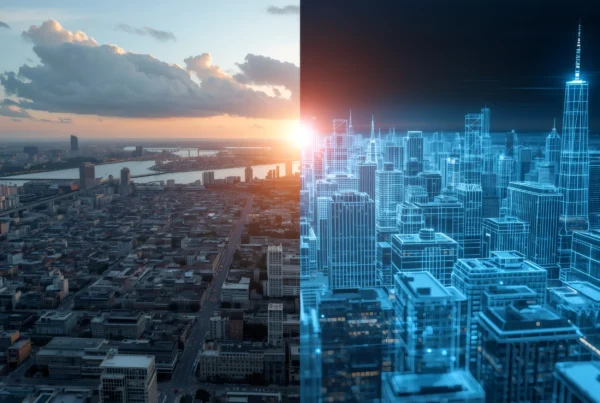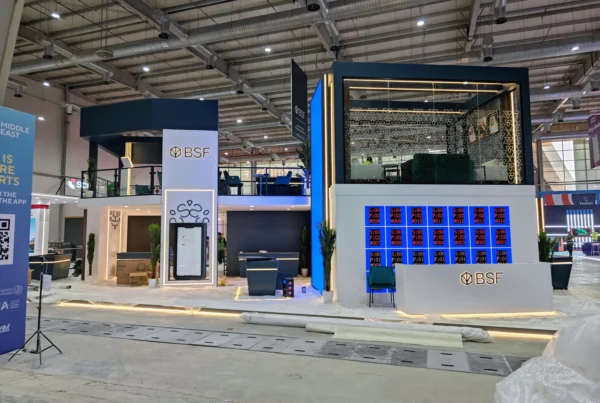1. Why Gamified Lead Capture Matters in 2025
Trade shows, pop-up activations, and brand experience centers have re-emerged with renewed vigor now that in-person gatherings dominate the B2B marketing calendar again. Marketers are under intense pressure to make every square meter of exhibit space pay for itself, yet the audience has changed. After two years of remote work and Netflix-level entertainment, booth visitors won’t tolerate bland clipboard surveys. They expect immediacy, interactivity, and-above all-fun.
Enter the gamified lead capture booth. By weaving game mechanics into the data-collection process, brands spark genuine excitement instead of reluctant compliance. Visitors line up to compete on a leaderboard or win an instant prize, all while seamlessly sharing the data marketers need for hyper-personalized follow-up. That handshake between delight and data results in a two-fold win: better attendee memories and a dramatically cleaner lead file. Internal studies from event-tech vendors suggest that gamified activations can increase lead capture volume by up to forty percent compared with traditional badge scans. Couple that gain with near-real-time CRM synchronization-no more weeks spent deciphering scribbled business cards-and you have an experiential engine custom-built for the modern revenue team.
Chameleon Interactive has spent years designing installations that sit at the crossroads of physical space and digital engagement, from the city-scale data layers in our Jeddah Central Development Company Digital Twin Project to the storytelling flowcharts that underpin our immersive showrooms across Saudi Arabia. The same user-centric principles apply to kiosks on the show-floor: give people a reason to stay, guide them through a narrative arc, and make sure every touch produces measurable insight.
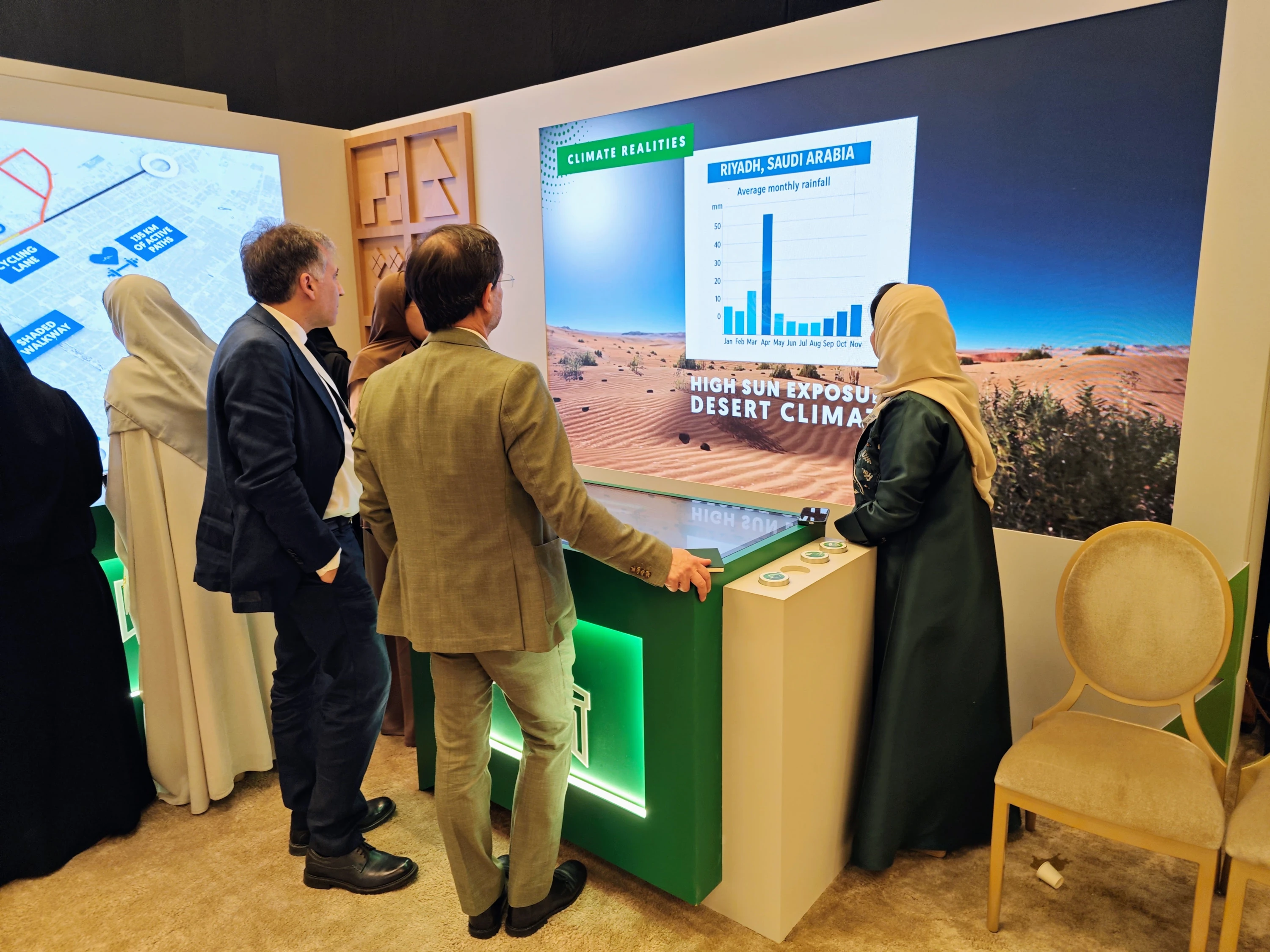
2. The Hidden Costs of Yesterday’s Lead-Capture Tactics
Long before the first booth frame is erected, most exhibitors approve six-figure event budgets based on one key promise: net-new pipeline. Yet legacy capture tactics consistently erode potential ROI. Paper forms get smudged, badge scanners malfunction, and hurried staffers forget to add critical qualification notes. Worse, incomplete or inaccurate contact data can tank deliverability rates for post-event email nurtures, pushing carefully curated prospects straight into spam folders.
Dirty data compounds quietly: a salesperson wastes time chasing the wrong phone number; marketing automation workflows misfire because a Boolean field reads “N/A.” According to industry sources such as Exhibitor Magazine, more than thirty percent of event marketing dollars disappear into inefficiencies tied to poor lead management. The immediate pain is budgetary, but the long-term damage is reputational. When a prospect fills out an interest card at your booth yet never hears back-owing to lost paperwork you’ve not only lost a sale, you’ve broadcast a subtle message about your brand’s operational maturity.
3. Defining the Modern Gamified Lead Capture Booth
A gamified lead capture booth is a self-contained digital station-often a free-standing kiosk, sometimes a network of multiple screens-where gameplay doubles as data entry. Visitors swipe an NFC badge or scan a QR code, triggering a short game that masks a lead-qualification journey. By the time the game announces a score, the visitor has provided a full suite of first-party data: name, email, company, job title, and a handful of zero-party responses such as product interests or purchasing time frame.
While the outward manifestation may look like a giant smartphone on a pedestal, the magic lies behind the glass. A properly configured gamified booth integrates:
-
High-resolution touch displays that entice passers-by with rich motion graphics.
-
NFC, RFID, or optical badge readers that autofill core fields in seconds.
-
Cloud-based middleware that maps each gameplay event-button press, swipe, completion time-to your CRM’s custom properties.
-
Real-time leaderboards that drive healthy competition and social proof.
-
Reward logic that issues printable coupons, SMS promo codes, or digital collectibles.
The result is an engagement flywheel: people are drawn in by lights and motion, they stay to beat the clock or top the leaderboard, and they exit with a prize while you receive a verified, context-rich lead.
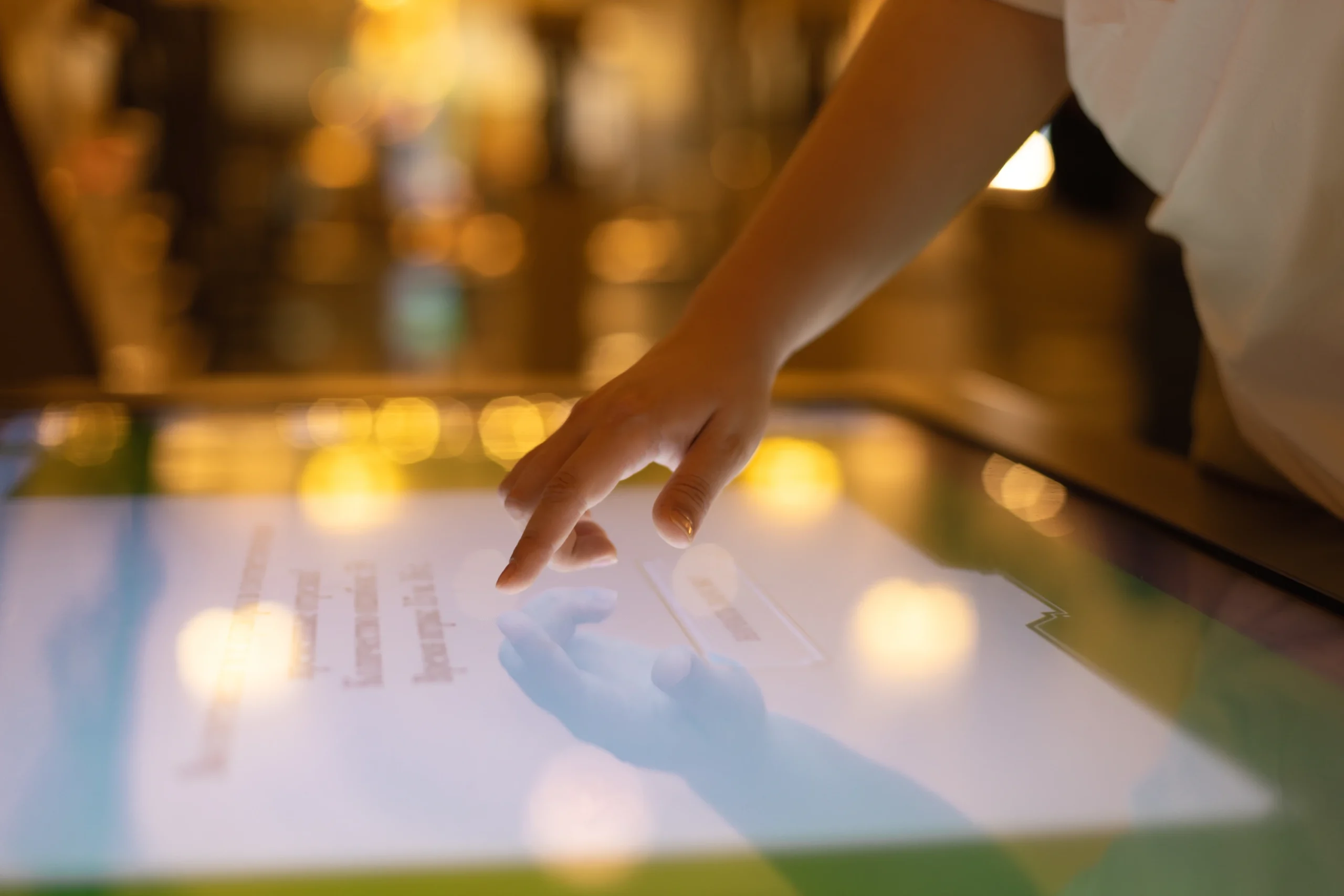
4. The Psychology of Play: How Gamification Fuels Conversions
Human beings are hard-wired to pursue rewards, solve puzzles, and broadcast status. Gamification taps directly into those motivational circuits through four levers:
1. Intrinsic Curiosity
A mystery box on a pedestal, an animated spinner promising surprise gifts-curiosity pulls people in. Because visitors choose to engage, marketers sidestep the perception of being “sold to” and instead invite voluntary participation.
2. Mastery and Challenge
Timed quizzes, drag-and-drop puzzles, or augmented-reality scavenger hunts provide mild stress-just enough for the brain to release dopamine when a goal is achieved. That biochemical reward cements a positive association with the host brand.
3. Social Proof
When a crowd forms around a kiosk displaying a live leaderboard, the activity signals value. Other attendees approach to find out why their peers are cheering, creating a self-reinforcing feedback loop that drives booth traffic without additional spend.
4. Variable Rewards
Borrowing from behavioral economics, variable reinforcement-think randomized swag draws-creates anticipation. A visitor who scores 8/10 might win a branded water bottle, while a perfect ten yields entry into a high-value prize draw. The unpredictability keeps lines moving even late in the day.
Each lever maps neatly to lead-capture outcomes: curiosity generates walk-ups, challenge keeps users long enough to complete data fields, social proof scales reach, and variable rewards boost repeat engagement for multi-day events.
5. Designing Game Loops That Turn Players into Prospects
A potent game loop for a gamified lead capture booth involves three phases: onboarding, play, and payoff. Getting each stage right can double completion rates and halve abandonment.
Onboarding: Remove All Friction
Aim for a time-to-play of less than fifteen seconds. NFC badge readers or quick QR scans should auto-populate key fields. If you must request manual inputs-perhaps a budget range or purchase timeline-limit to one or two taps. The sooner a user reaches the “Start Game” button, the less likely you lose them to hallway distractions.
Gameplay: 60- to 90-Second Bursts
Industry studies reveal a sharp decline in engagement after the 90-second mark. Short cycles mean more visitors served and lower queue frustration. Use simple, intuitive mechanics-swipe to sort recyclable icons, tap to stack virtual coins-paired with escalating difficulty. Sound effects and haptic feedback add sensory richness, while on-screen progress bars assure participants they’re nearing the goal.
Payoff: Delight and Data
A celebratory animation followed by an instant reward is critical. Print a coupon, flash a QR code for digital swag, or trigger an SMS link to an exclusive landing page. On the back end, your middleware should attach metadata such as game score, time to completion, and prize tier to the contact record. This behavioral context arms sales teams with conversational hooks: “I saw you aced our recycling challenge-clearly sustainability is on your radar. Let’s talk about our eco-certified products.”
Brand Alignment Matters
Gamification only works long term if the theme complements your brand story. A cybersecurity vendor might theme its mini-game around thwarting hackers, while a snack manufacturer could run a flavor-mixing challenge. At Chameleon Interactive, we start each engagement by mapping corporate values to interactive metaphors, an approach honed in our user-journey consulting practice.
6. Data Architecture: From Touch-Screen Tap to CRM Insight
Fun is pointless without functional data plumbing. A best-in-class gamified lead capture booth routes information through a secure, low-latency pipeline:
-
Edge Capture
Kiosks store inputs locally-encrypted-whenever connectivity blips occur. That offline resilience ensures no lead is lost in a dead-zone. -
Real-Time Sync
Once online, the kiosk pushes payloads through a RESTful API to middleware such as Captello or Momencio, which in turn writes lead objects into platforms like HubSpot or Salesforce. Because the handoff is instantaneous, marketing automation workflows kick off while the event is still live. -
Enrichment & Scoring
Third-party data append services can match email domains to firmographic insight, enriching records with company size or funding stage. Machine-learning models then score leads based on game-behavior plus survey responses, letting reps prioritize high-intent prospects the morning after the show. -
Security & Compliance
Even though we’re dropping the formal “Risk Checklist” section, it bears repeating that encryption at rest, TLS 1.3 in transit, role-based access, and GDPR consent checkboxes are mandatory parts of the architecture. Our engineering team borrows practices from NIST guidelines employed in smart-city projects, ensuring kiosk endpoints operate on a zero-trust network island and cannot pivot into core corporate systems.
7. Measuring Success of Gamified Lead Capture Booth: Metrics, Formulas, and Benchmarks
Because everything is timestamped and tagged, ROI calculations move from hopeful guesswork to precise math.
| KPI | Formula | Benchmark |
|---|---|---|
| Engagement Rate | Game starts ÷ booth visitors | 30–50 % typical; 60 %+ elite |
| Completion Rate | Submitted leads ÷ game starts | 70–90 % |
| Qualified Lead Ratio | Leads matching ICP ÷ total | 20–30 % |
| Cost per Lead (CPL) | Kiosk programme cost ÷ total leads | $8–$15 |
| Pipeline Contribution | Closed-won from kiosk leads | <company-specific> |
Let’s walk through a hypothetical:
You invest $15,000 for hardware, software, and prize inventory. Two thousand people visit your booth; nine hundred start the game and seven hundred finish. Post-show, two hundred meet your ICP filters. If fifty close at an average $8,000 deal size, your pipeline equals $400,000. Even accounting for an average win rate of 25 percent, that’s $100,000 realized revenue-nearly seven times your outlay.
8. What’s Next? AI, AR, and the Future of Interactive Kiosks
Technology curves upward fast. The next wave of gamified lead capture booth deployments will feature:
-
AI-Driven Personalization: Large language models embedded in kiosk firmware will generate custom quiz questions in real time, tailoring difficulty to visitor profile data.
-
Computer-Vision Insights: On-device facial analytics – not stored images – will gauge dwell time and emotional engagement, adjusting on-screen encouragement when attention drops.
-
Augmented Reality Treasure Hunts: AR overlays will direct attendees to multiple kiosk “chapters,” each unlocking story fragments and additional data points. When deployed across sprawling expos, these distributed touch-points collect multi-session user journeys for deeper behavioral insight.
-
Edge-AI Lead Scoring: Instead of batching data to cloud-centric CRMs, lightweight edge models will score leads locally – zero lag, immediate sales alerts via push notification.
Chameleon Interactive’s R&D division has already ported computer-vision tracking from our Future of Audiovisual Solutions in Jeddah study into kiosk prototypes. By overlaying foot-traffic heat maps, we reposition kiosks in real time, driving up engagement by double-digit percentages over the course of multi-day events.
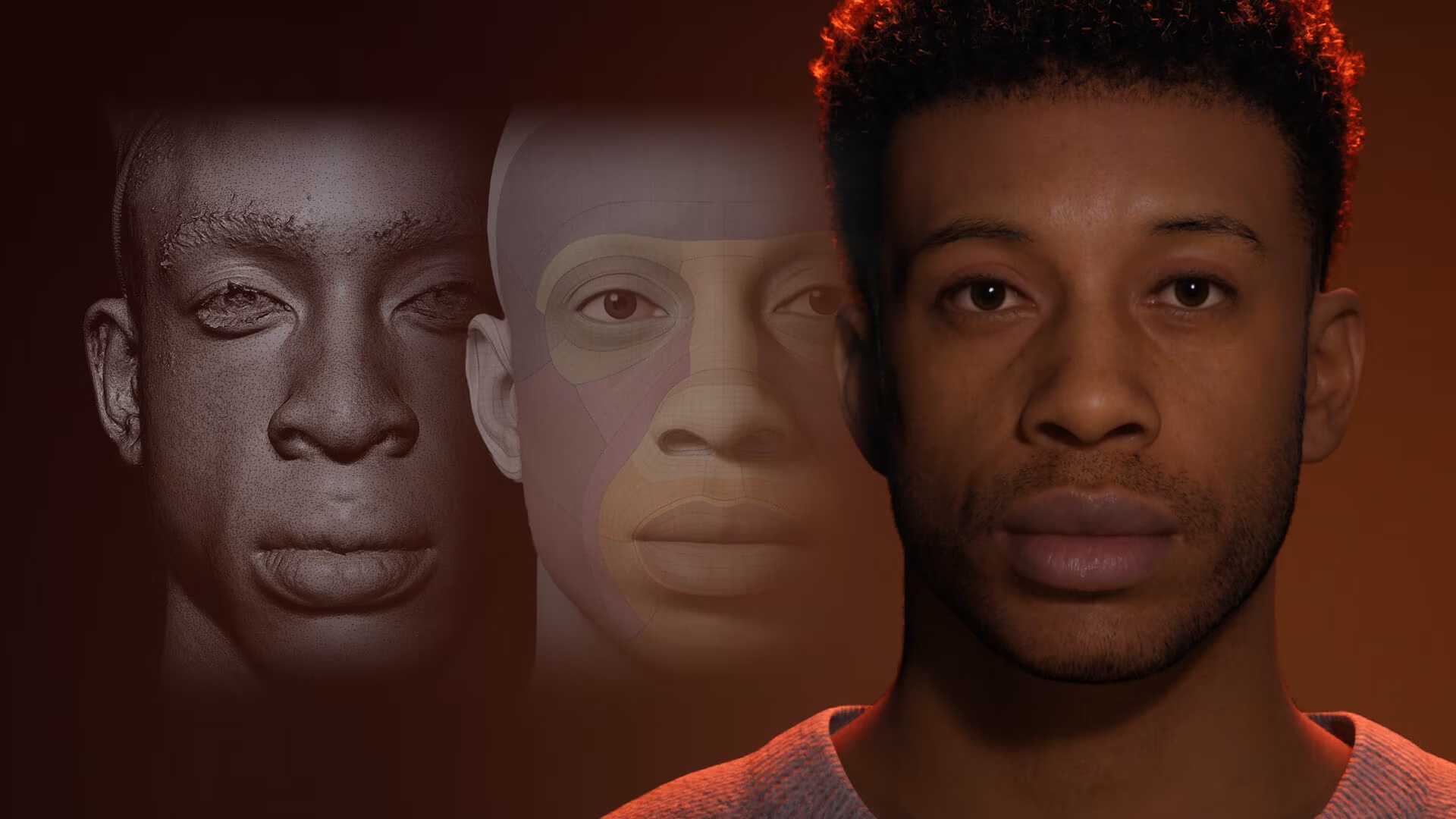
9. Conclusion – Turning Foot Traffic into Pipeline Velocity
Event marketing is expensive, competitive, and fleeting. Attendees decide in seconds whether to step into your space or veer toward the coffee stand. A gamified lead capture booth tilts that split-second decision in your favor by exchanging boredom for play. The visitor gets enjoyment—and usually a prize—while you capture structured, enriched, GDPR-compliant data delivered to sales reps before the traveler’s flight home.
Chameleon Interactive leverages a decade of interactive-experience design, honed on everything from digital twins of entire city districts to micro-level retail pop-ups, to craft kiosks that delight and convert. When we apply narrative-driven UX, cinematic visuals, and airtight data engineering to your booth footprint, the result is measurable revenue acceleration, not just good vibes.
Ready to gamify your next event and watch your CRM light up in real time? Schedule a strategy session with our team, and let’s transform foot traffic into pipeline velocity.
Frequently Asked Questions About Gamified Lead Capture Booths
Q1. What is a gamified lead-capture booth?
A gamified lead-capture booth is an interactive kiosk that turns data collection into a short, engaging game such as a quiz, puzzle, or AR challenge while seamlessly sending visitor information to your CRM in real time.
Q2. How does a gamified kiosk improve trade-show ROI?
By replacing boring forms with play, these kiosks typically lift engagement rates by 30-50 percent and generate up to 40 percent more qualified leads, cutting cost-per-lead to as little as $8–$15.
Q3. How long should the in-booth game last?
Best-practice timing is 60–90 seconds. Short loops keep lines moving, minimize drop-offs, and still provide enough interaction to gather meaningful data.
Q4. What data can I capture during gameplay?
Standard fields name, email, company plus zero-party insights like product interest, purchase timeline, and even behavioral metrics such as completion time or score, all of which feed lead-scoring models.
Q5. Do visitors need to type anything?
No. Most kiosks use NFC badge taps or QR scans to auto-populate core details. Manual inputs, if any, should be limited to one or two quick taps.
Q6. Is the data secure and GDPR-compliant?
Yes well-designed systems encrypt data in transit and at rest, isolate kiosks on a zero-trust network, and display an on-screen consent checkbox to satisfy GDPR, CCPA, and Saudi PDPL requirements.
Q7. What types of rewards work best?
Instant, tangible incentives digital coupons, branded swag, or entry into a live leaderboard prize draw consistently boost participation more than delayed or raffle-only rewards.
Q8. Can the kiosks operate without Wi-Fi?
Absolutely. Edge caching stores data offline and syncs automatically when connectivity returns, ensuring no leads are lost in dead zones.
Q9. How soon will new leads appear in my CRM?
With real-time API integration, contact records including game scores and qualifiers arrive in HubSpot, Salesforce, or Marketo within seconds, enabling same-day nurture emails.
Q10. What advanced features are trending for 2025?
Expect AI-generated quiz questions, computer-vision demographics for on-the-fly personalization, and augmented-reality scavenger hunts that guide visitors to multiple stations for deeper data capture.
